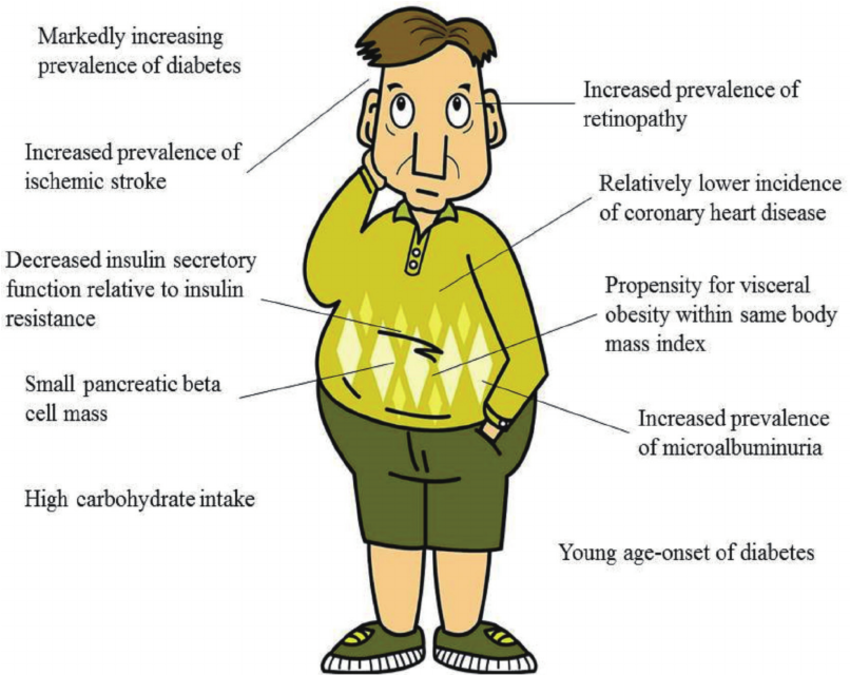ลักษณะคนไข้เบาหวานชาวเอเชียที่แตกต่างจากชาวตะวันตก ได้แก่ เป็นเบาหวานตั้งแต่อายุน้อยกว่า อ้วนกว่า อ้วนลงพุง ดื้ออินซูลิน มวลเบต้าเซลล์น้อยกว่า มีอัลบูมินรั่วในปัสสาวะได้บ่อยกว่า เสี่ยงต่อการเกิดหลอดเลือดสมองตีบมากกว่า เป็นต้น
The prevalence of diabetes is increasing globally, particularly in Asia. According to the 2013 Diabetes Atlas, an estimated 366 million people are affected by diabetes worldwide; 36% of those affected live in the Western Pacific region, with a significant proportion in East Asia. The reasons for this marked increase in the prevalence of diabetes can be extrapolated from several distinct features of the Asian region. First, the two most populated countries, China and India, are located in Asia. Second, Asians have experienced extremely rapid economic growth, including rapid changes in dietary patterns, during the past decades. As a result, Asians tend to have more visceral fat within the same body mass index range compared with Westerners. In addition, increased insulin resistance relative to reduced insulin secretory function is another important feature of Asian individuals with diabetes. Young age of disease onset is also a distinctive characteristic of these patients. Moreover, changing dietary patterns, such as increased consumption of white rice and processed red meat, contributes to the deteriorated lifestyle of this region. Recent studies suggest a distinctive responsiveness to novel anti-diabetic agents in Asia; however, further research and efforts to reverse the increasing prevalence of diabetes are needed worldwide.
https://www.researchgate.net/publication/282589883_Diabetes_in_Asians









